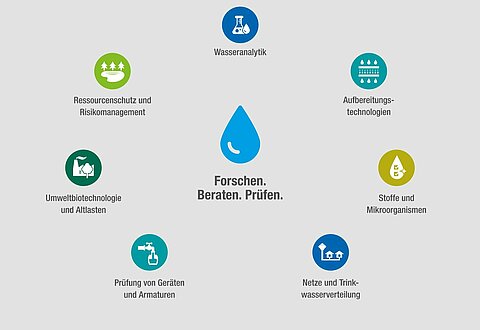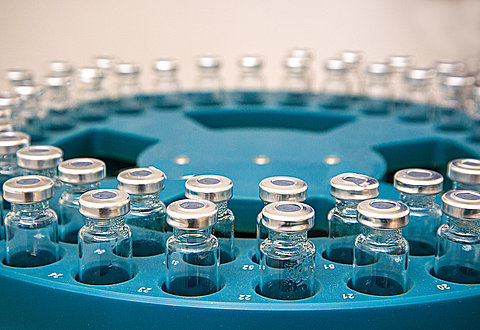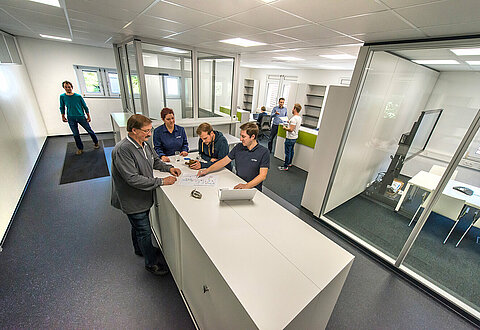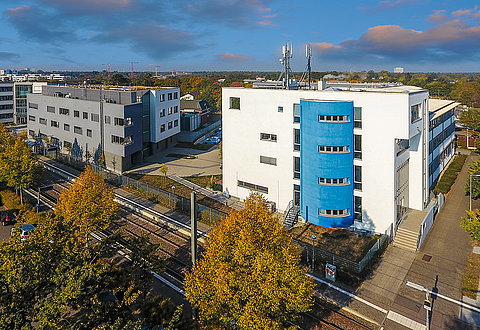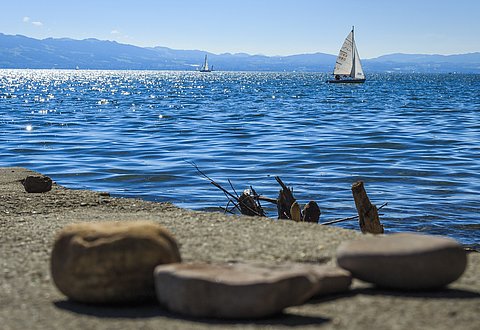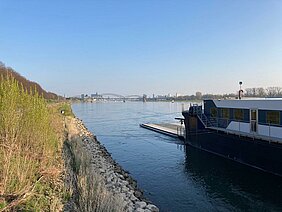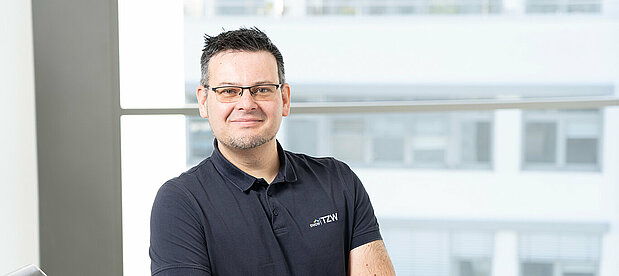In the EU Drinking Water Directive adopted in January 2021 an additional parameter was added for the assessment of microbial risks: somatic coliphages. The way in which this requirement is implemented is left to the member states in their national implementation.
The EU Drinking Water Directive 2020/2184 (EU-DWD) now includes a risk-based approach, which, among other things, provides that the raw water and, if the reference value of 50 PFU / 100 mL is exceeded, the water within the treatment process is to be tested for "somatic coliphages" to determine the microbial risk, in particular from faecal viral pathogens. The parameter "somatic coliphages" is used to verify the removal efficiency of the treatment for viruses or particles in the size range of viruses.
As part of this project, raw waters with varying degrees of surface water influence in the form of river water were selected (direct treatment (< 1 h), short underground passage (5 d), long bank filtration (50 d) and very long bank filtration (> 100 d)), in which specific analyses for bacterial and viral pathogens were carried out using cultural and PCR based methods. River waters were selected as surface waters, to be sure that these waters contain a sufficiently high initial microbiological load to be able to calculate a log retention by particle removal.
By examining four water supplies that use river water for drinking water treatment, raw water with different residence times in the first particle removal step (in water treatment for direct river water treatment and in the subsurface for soil filtrates and bank filtrates) could be examined.
In three of the four river waters, the mean values of the concentrations of somatic coliphages were above the reference value of 50 PFU / 100 mL, which according to the EU-DWD requires an evaluation of the effectiveness of the treatment processes.
A strong surface water influence was found in the water supply companies with the short residence times (< 1 h (direct treatment), 5 d soil passage), a very low or hardly detectable surface water influence in the bank filtrates with long residence times (50 d, > 100 d).
On the one hand, this influence could be recognized from the historical data, as the frequency of positive results of coliform bacteria in the raw waters was still almost 100 % in the heavily influenced waters, while the frequency was less than 1% in the hardly influenced raw waters with the long soil passages. On the other hand, the achievable retention rates and also the quantitative microbial risk assessment showed that these can achieve a possible health target of 10-4 infections per person per year for the long residence times in the underground.
Therefore, testing for somatic coliphages for risk assessment purposes is always useful and necessary for highly polluted river waters, as well for soil or bank filtrates with short residence times in the subsurface.
Publication:
DVGW energie | wasser-praxis (EWP) in progress


![[Translate to English:] Prüfstelle-Produktprüfung_Teststand Test centre and product testing](/fileadmin/_processed_/0/9/csm_TZW-Karlsruhe_Pruefung_Geraete-Teststand_444204ae51.jpg)
















